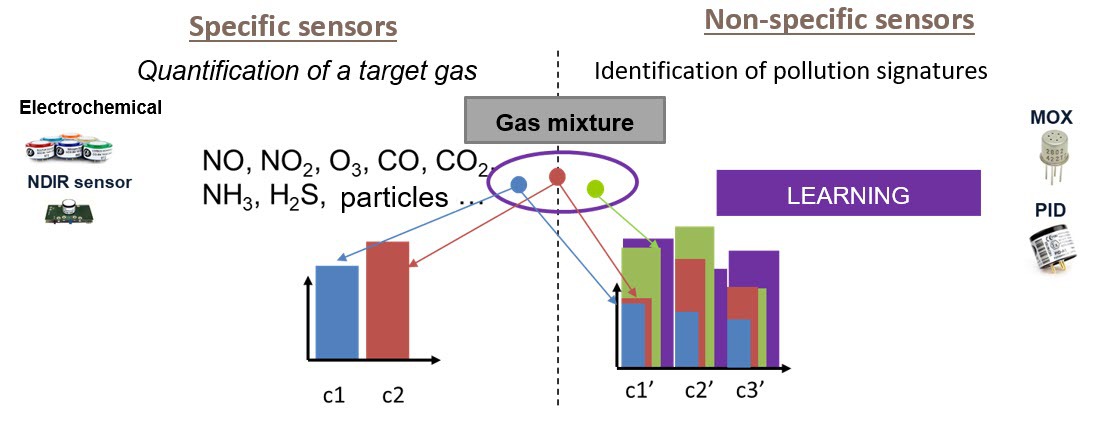Applications
What are the technical performances of sensors?
For measuring air pollutants, we distinguish between specific sensors and non-specific sensors:
'Specific' sensors are those capable of quantifying a single and well-targeted species, with negligible cross-sensitivity to other interferents. Only electrochemical and optical sensors fall into this category.
Advantages | Disadvantages |
|---|---|
Targeted detection of a single species: NO, NO2, O3, CO, CO2, NH3, H2S, particles |
|
'Non-specific' sensors are sensitive to families of pollutants rather than a single target species. These sensors react differently in the presence of interferents. Although this may be seen as a disadvantage, this potential is harnessed by implementing multi-sensor systems combined with signal processing methods derived from artificial intelligence. After proper training, it is then possible to detect pollution signatures through learning. This is sometimes referred to as an electronic nose.
